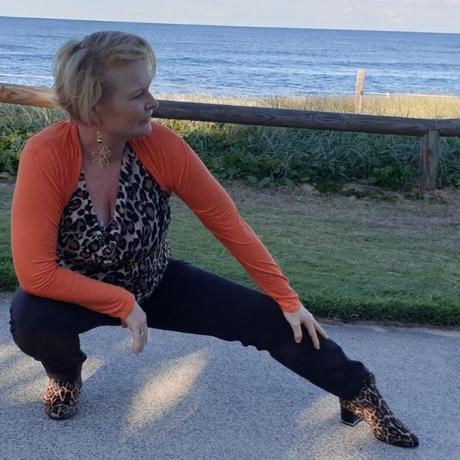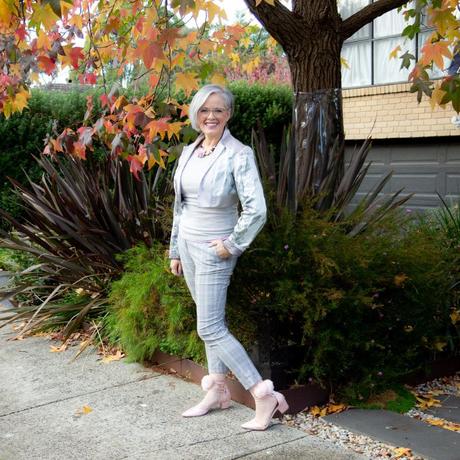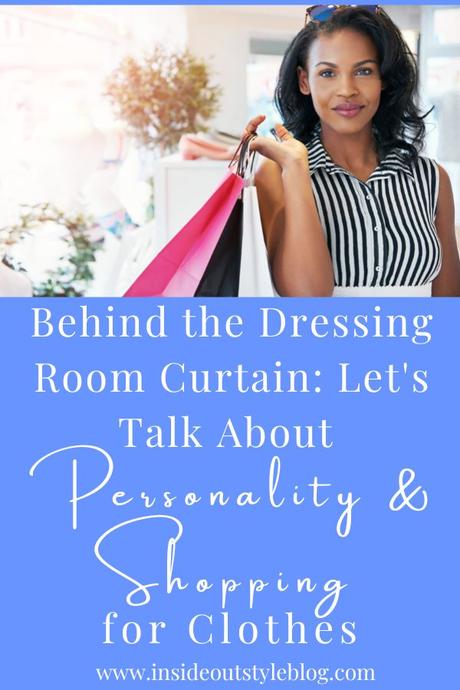



Jill Chivers of 16 Style Types and I discuss aspects of shopping for clothes that you may never have thought of before in this video. What is really going on with ourselves psychologically when we are shopping?
&iv;&modestbranding;&rel;&autohide;&playsinline;&autoplay;
All of Us Shop
Some of us have a good relationship with shopping, whilst others have a more fractured relationship with shopping. Many have a more unconscious relationship. You could ask yourself:
- When I’m shopping at my best, what makes it work so well?
- When I go wrong with shopping, what’s really happening?
When you think about your personality, you can use the lens of personality type (such as Myers Briggs/Psychological Types) to understand more deeply what’s really going on when you are shopping.
Your Personality Type Doesn’t Tell You Exactly What You’ll Wear
Your type is not a predictor of all behaviours and certainly can’t tell you what outfits you’ll choose to wear, but it does tell you about your approach to style. This is because it’s key to helping you how you best perceive, or bring in information around you, and then how you prefer to make decisions. Shopping (like many activities) is a constant vacillation between taking in what’s available and then making decisions about what you want.
- Your perceiving comes in the form of either the S or N in your 4 letter type code, standing for Sensing or iNtuition.
- Your judging (decision making) comes in the form of either the T or F in your type code – standing for Thinking or Feeling.
Depending on which is more dominant for you – either perceiving and wanting to continue to gather more information, to see more options, to find out what else is available for you, or your judging/decision making, wanting to make a decision more quickly and move onto the next thing, this will make how you shop a different experience from someone else with a different type code.
When Does Shopping Feel Enjoyable?
- Do you feel overwhelmed when shopping?
- Do you find it super hard to make a decision about what to buy?
- Do make hasty decisions and then regret them when you get home?
For those who are Judging dominant, too many options can feel overwhelming very easily and so can make it hard to make a decision, as Jill says, all those options make it feel like you’re drinking from a fire hydrant, it’s all too much.
For perceiving dominant people, if you’re forced into a decision too quickly you don’t feel confident with the decision as you’ve never got to the end of the exploration, the end of taking in data. Or sometimes you’re taking in so much data, always looking at one more website or one more store, and so it becomes impossible to make any decision as there is a never-ending set of possibilities in this modern internet age.
For Jill, whose signature print is leopard, she has to be wary that just because she finds a leopard print item, doesn’t mean that it has to come home with her (she may have something very similar already, it may not be as great a fabric or construction that she’d ideally like, the garment may not fit well), her own personal criteria of other aspects of style are all things she has to consider when shopping for clothes.

Sometimes we can make a decision too quickly and regret it, and other times never make a decision and regret that as well!
If you get stuck in “analysis paralysis” then this is an indicator that you’re stuck in your perceiving function and you need to bring your judging function into the equation to provide balance and actually make a decision.
Developing your Personal Style Criteria
This is key to helping you get unstuck, or to make the best decisions for you when shopping as you can then run any decision past this criteria.
What can go into your Personal Style Criteria?
Your style recipe is a fantastic starting point. If a garment or accessory doesn’t meet this, then it doesn’t matter how well it fits, or if it’s a signature colour, it’s never going to make you look and feel the way you really want to feel and look.
Your body guidelines – what harmonises with your physicality – your body shape, proportions, variations, scale, texture and sheen
Your colouring – including value and color contrast – the colours and way of putting those colours together that make you look your most alive, vibrant and gorgeous
Your lifestyle – what do you need in your wardrobe so that you have the kinds of clothes you need for the life you live today and for tomorrow as well?
Your values – what matters to you? Ethical? Sustainable? Influential?

For me, I try and run my own personal style criteria past any potential garments and accessories. For example, I knew these shoes were a winner for me the moment I saw them as they fit my style criteria, I know they are not for everyone, but they are for me.
How to Shop More Effectively
In our Your Type of Style program, we have an entire module dedicated to shopping as we want to arm you with all the best tools that work for you as an individual, with your individual needs, so that you can get over that analysis paralysis, or making decisions too quickly (whichever of these is more you), we give you a tried and tested model that will lead you through what you do well, plus where your blindspots are (that can trip you up without you being aware).
One tried and true method that Jill uses (and others who have an overshopping issue have found particularly useful) is the “power pause” where you leave at least 2 hours between when you find an item, and when you make the purchase (in fact, sometimes Jill leaves it a few days). I’ve used this technique if I’m not 100% sure about an item and found it a really great tool, as I know if I’m still yearning and thinking about an item, hours or days or weeks later, then it’s a definite YES. But if I fairly quickly stop thinking about it then it’s a definite NO.
The flipside of rushing into decisions too quickly and needing a way to stop yourself, is that you are too slow to decision making, and end up losing out in some way or other.
Did you know that the “average woman wastes around $900+ every year on clothes she doesn’t wear”? That’s a pretty staggering statistic and when you add it up year on year you can start to understand why I bang on endlessly about getting a style education so that you stop making those poor decisions and start making the best ones you can, based on your own personal style criteria that serve as the guide posts and handrails you need to navigate the whole landscape of shopping for clothes and creating your personal brand image.
When You Learn How to Make the Best Shopping Decisions For You
You’ll end up with a wardrobe full of clothes you love and that love you back and get more joy from getting dressed each day
You’ll find getting dressed a more pleasurable experience
You’ll waste less money (so you have more money for other amazing experiences in your life)
I truly believe that knowledge is power and the more wisdom you have with regards to your approach to style and what really works for you in a true and authentic way, you’ll know where both your genius and your blindspots are (and awareness is key to everything in life) and then it makes the whole process of style easier.
If you’d love to dive deep into understanding more about how your personality influences all your style choices (don’t worry, you don’t need to know your type to do this, it’s something you get in the program), then head on over to discover more about Your Type of Style. We only open the doors to the program once a year (September start) so now is the time to make that decision if you’ve been thinking about it!






